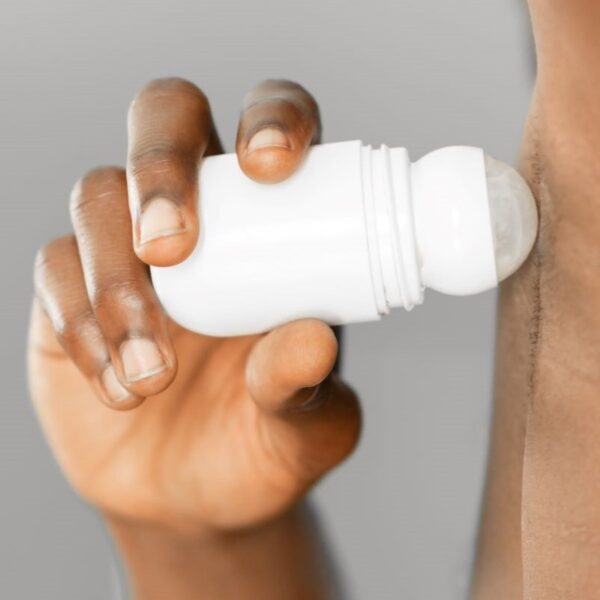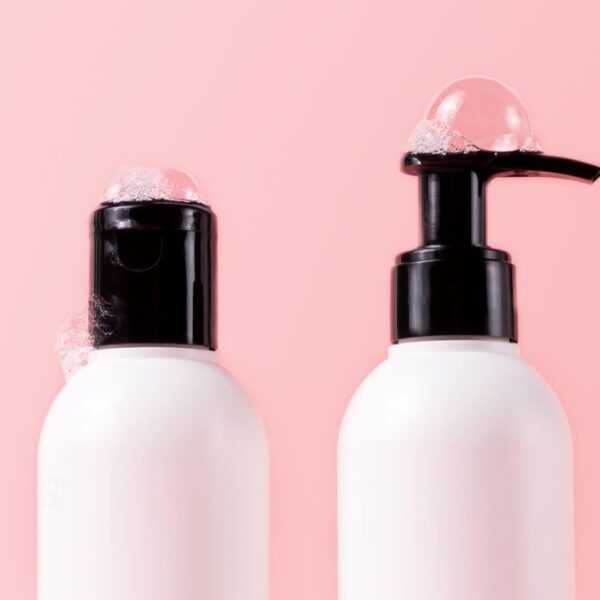One compound that stands out for its wide-ranging applications and benefits in the personal care industry is ethanolamine, also known as 2-aminoethanol or monoethanolamine (MEA). The ubiquity of ethanolamine in our daily lives, particularly in personal care items, might surprise many. As we delve into the properties of this compound and its roles in product formulation, its extensive usage quickly becomes apparent. Ethanolamine is an organic compound comprising alcohol (OH) and amine (NH2) functional groups, providing unique chemical attributes that make it indispensable in numerous applications. Its ability to function as a base, an emulsifier, and a surfactant gives it versatile utility in personal care products and beyond.
This article will explore ethanolamine’s unique properties and functions that make it a vital ingredient in personal care products.
What is Ethanolamine?
Ethanolamine (2-aminoethanol, monoethanolamine, ETA, or MEA) is an organic chemical compound with the formula HOCH₂CH₂NH₂ or C₂H₇NO. The molecule is bifunctional, containing both a primary amine and a primary alcohol.
Source: Wikipedia
Ethanolamine is characterized by its characteristic odor, which is similar to ammonia. It is bifunctional and has a dual amine and alcohol component. It forms cellular membranes and serves as a building block for life. It was previously believed that this compound only existed on Earth and in certain asteroids. In 2021, it was discovered that ETA molecules are present in interstellar space. MEA is a common ingredient in the floor and tile cleaners and laundry detergents to help remove dirt, grease, and stains. MEA helps remove contaminants from gasoline. MEA acts as a plasticizing agent, and chemical manufacturing plants may use MEA to remove carbon dioxide from ammonia gas to produce synthetic ammonia.
How is Ethanolamine Produced?
Monoethanolamine is produced by treating ethylene oxide with aqueous ammonia; the reaction also has diethanolamine and triethanolamine. The stoichiometry of the reactants can control the ratio of the products.
Ethanolamine is produced by reacting 1 mole of ethylene oxide with 1 mole of ammonia. Typically, ethylene oxide is reacted with ammonia in a batch process to create a crude mixture of approximately one-third each of ethanolamine, diethanolamine, and triethanolamine, which is then separated, achieving varying degrees of single component purity.
Use of Ethanolamine in the Industry
Ethanolamine is used to manufacture emulsifiers and dispersing agents for textile specialties, agricultural chemicals, waxes, mineral and vegetable oils, paraffin, polishes, cutting oils, petroleum demulsifiers, and cement additives. It is an intermediate for resins, plasticizers, and rubber chemicals. It is also used as a lubricant in the textile industry, as a humectant and softening agent for hides, as an alkalizing agent and surfactant in pharmaceuticals, as an absorbent for acid gasses, and in organic synthesis. Ethanolamine has uses as an indirect food additive; ethanolamine is allowed for use as a component of adhesives. Ethanolamine is also used as a rust inhibitor in water-based metalworking fluids.
Applications in Personal Care Industry Segment
In cosmetics and personal care products, Triethanolamine may be used in some makeup products such as eyeliner, mascara, eye shadow, blush, makeup bases, and foundations, as well as in fragrances, hair care products, hair dyes, wave sets, shaving products, sunscreens, and skin care and skin cleansing products. Ethanolamine may be used in some permanent waves and hair dyes and colors.
| Function | Applications |
| pH Regulating Agent | Ethanolamine can be helpful in pH adjustment because it can both donate a proton in an alkaline environment and accept a proton in an acidic environment. Ethanolamine helps form emulsions by reducing the surface tension of the substances to be emulsified so that water-soluble and oil-soluble ingredients can be blended. They also control the pH of cosmetics and personal care products. |
Product Examples
| Type | Examples |
| Skin Care | Face Creams, Moisturizing Lotions, Barrier Creams |
| Hair Care | Hair Color, Temporary Hair Coloring Products |
Properties of Ethanolamine
| Appearance at 25 °C | Viscous colorless liquid |
| Molecular Weight (g/ml) | 61.084 |
| Density at 18°C (g/cm3) | 1.0117 |
| Acidity (pKa) | 9.50 |
| Viscosity (25 °C) | 18.95 |
| Solubility | Miscible in Water. Soluble in alcohol, ethanol, chloroform, glycerol |
| Melting Point °C (50.5 °F; 283.4 K) | 10.3 |
| Boiling Point °C (338 °F; 443 K) | 170 |
| Refractive Index (20 °C) | 1.4539 |
| Odor | Unpleasant ammonia-like odor |
| Shelf Life | 12-18 months |
| Storage Conditions | – Store in well-filled, tightly sealed containers in a cool, dry place. – Ideal Storage Temperature- Below +30°C. |
Typical Formulations
Ammonia-Free Long Lasting Hair Dye
This ammonia-free permanent hair dye features Floraesters® K-20W Jojoba. Floraesters K-20W Jojoba is a natural emollient that decreases dye time and hair dye fading. The results are soft hair with long-lasting color and shine.
| PHASE | INCI Name | TRADE Name | Supplier | % Wt. |
| A | Water | Deionized Water | – | q.s |
| Tetrasodium EDTA | Versene® 220 Crystals Chelating Agent | Dow Chemical Co. | 0.20 | |
| Ethanolamine | Monoethanolamine | Dow Chemical Co. | 5.00 | |
| Ethoxydiglycol | Glycol Ether DE LGV | Dow Chemical Co. | 2.00 | |
| Oleic Acid | Oleic Acid | NOF America Corporation | 4.00 | |
| B | Propylene Glycol | Propylene Glycol USP/EP | Ashland, Inc. | 2.00 |
| Hydrolyzed Jojoba Esters (and) Water (Aqua) | Floraesters K-20W Jojoba | Floratech | 2.00 | |
| C | Water | Deionized Water | – | q.s |
| Ascorbic Acid | L-Ascorbic Acid, FCC | Sigma-Aldrich, Inc | 0.50 | |
| Sodium Sulfate | Sodium Sulfate Anhydrous (Granular/Certified ACS) | Fisher Scientific | 1.00 | |
| p-Phenylenediamine (PPD) | Covastyle LP-PPD | Sensient Cosmetic Technologies | 0.50 | |
| Sodium Lauryl Sulfate | Sulfochem® SLS | The Lubrizol Corporation | 1.00 | |
| D | Cetyl Alcohol | Lanette® 16 | BASF Corporation | 12.00 |
| Cetearyl Alcohol (and) Ceteareth-20 | Hallstar® NCD-20 | The HallStar Company | 13.00 | |
| Total: | 100 | |||
Formulation Procedure
- Add the ingredients of Phase A to the main vessel in the order listed at 75°C and mix with moderate propeller agitation.
- Mix the ingredients of Phase B in a separate container. Add to Phase A at 75°C with moderate propeller agitation.
- Add the ingredients of Phase C in the order listed to Phase AB at 75°C with moderate propeller agitation.
- Mix the ingredients of Phase D. Add to Phase ABC at 70-75°C in a separate vessel with moderate propeller agitation.
- Stop heating once the mixture becomes a uniform emulsion. Cool to room temperature.
Typical Properties of the Formulation
| pH | 10 – 11 |
| Viscosity | 152k – 444kcP |
Source: Knowde
Safety & Regulatory Concerns
FDA Information
The U.S. Food and Drug Administration (FDA) includes Triethanolamine (TEA), Diethanolamine (DEA), and Ethanolamine on its list of allowed indirect food additives. These ingredients may be used in adhesives in contact with food and to assist in the washing or peeling fruits and vegetables.
EU Information
Ethanolamine is listed as Monoalkylamines, mono alkanolamines, and their salts in Annex III, Part I of the Cosmetics Regulation of the European Union. Ethanolamine can be used in cosmetics and personal care products if the secondary amine is less than or equal to 0.5%.
Cosmetic Ingredient Review (CIR) Information
The CIR Expert Panel concluded that ethanolamine and the 12 related ethanolamine salts are safe in the present practices of use and concentration described in the safety assessment (rinse-off products only) when formulated to be non-irritating.
Ethanolamine is safe for use in cosmetic formulations designed for discontinuous, brief use followed by thorough rinsing from the surface of the skin, and MEA should only be used in rinse-off products (1983).
In 2012, the CIR Expert Panel reviewed ethanolamine and 12 salts of ethanolamine. The Panel concluded that ethanolamine and the related ethanolamine salts are safe in the present practices of use and concentration (rinse-off uses only) when formulated to be non-irritating. They cautioned that ingredients should not be used in cosmetic products in which N-nitroso compounds can be formed.
Identification Numbers
| CAS Number | 141-43-5 |
| EC Number | 205-483-3 |
Acceptable Limits and Maximum Usage
The maximum usage level of Ethanolamine in the Personal Care industry as per the Personal Care Products Council regulatory agency is as follows:
| Category | Usage Level |
| Rinse-off Formulations | Up to 18% |
| Hair Color Aerosol Spray | Up to 3% |
| Hair Coloring Products | ≤30% |
| Non-Coloring hair preparations | ≤30% |
| Leave-on Formulations | ≤10% |
| Baby Products | 0.3-3% |
| Lipsticks | 3-10% |
Source: CIR Safety
Health Effects of Stearic Acid
| Carcinogenicity | Published carcinogenicity data was not found on ethanolamine or ethanolamine salts. |
| Dermal Irritation | In a study in which a formulation containing 5.9% ethanolamine was applied to the backs of 12 female subjects for 23 h/day for 21 days, the formulation was considered an experimental cumulative irritant. Results observed during the induction phase of a patch test of 165 subjects using a formulation containing 11.47% ethanolamine were interpreted by the Expert Panel as irritation. |
| Sensitization | A formulation containing 5.9% ethanolamine, tested undiluted in a 48-h occlusive patch test with a 10-day nontreatment period before the challenge, and one containing 11.47% ethanolamine, sampled at 5% in 25% alcohol in a repeated insult patch test using semi-occlusive patches, were not sensitizing in clinical studies. |
Fun Facts About Ethanolamine
- Ethanolamine belongs to a class of chemicals known as “amino alcohols”, which possess both an amine (NH2) and alcohol (OH) group. This dual nature allows it to interact with various other chemicals, making it an incredibly versatile compound.
- Ethanolamine is not just used in industry; it’s also an important molecule in biology. It forms a crucial part of phospholipids, the building blocks of cell membranes in all living organisms.
- In 2019, ethanolamine was detected in the coma of the comet 67P/Churyumov–Gerasimenko by the Rosetta spacecraft. This detection is significant as comets are believed to preserve the chemical characteristics present in the early Solar System.




